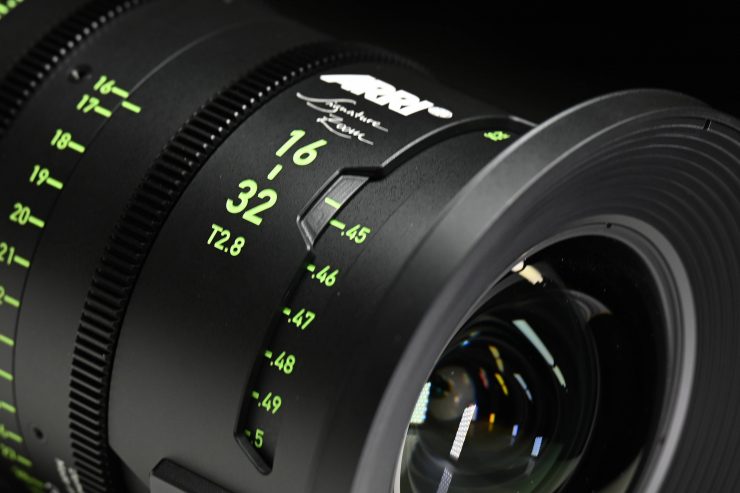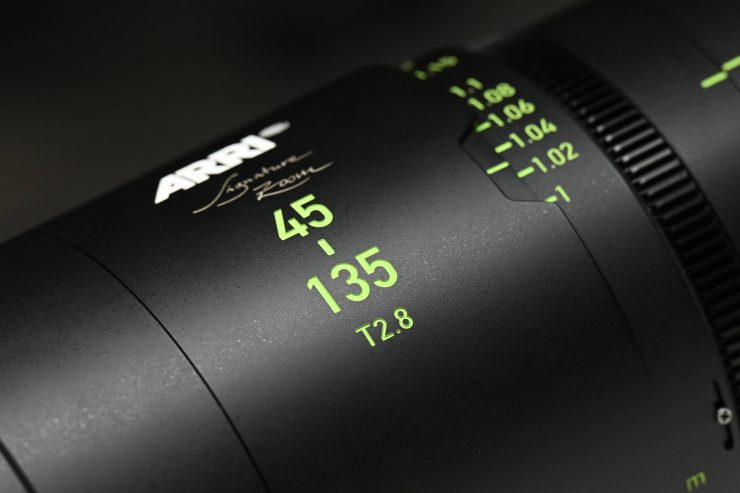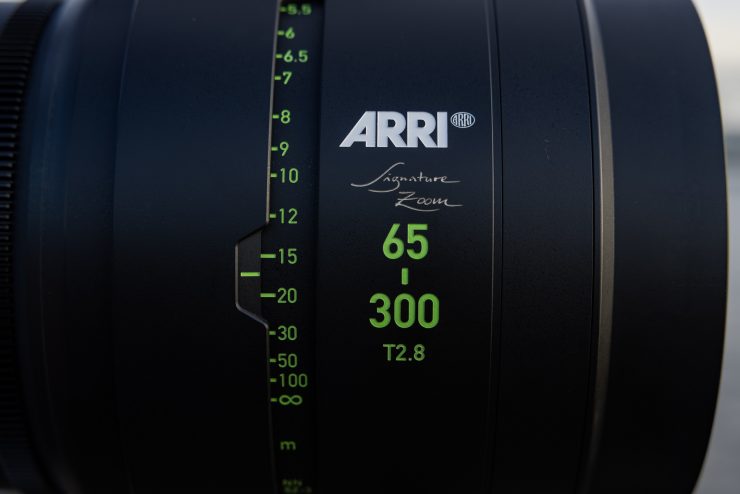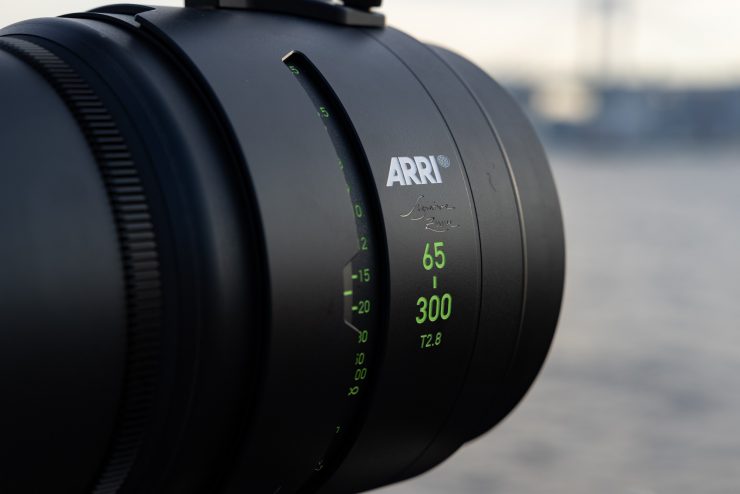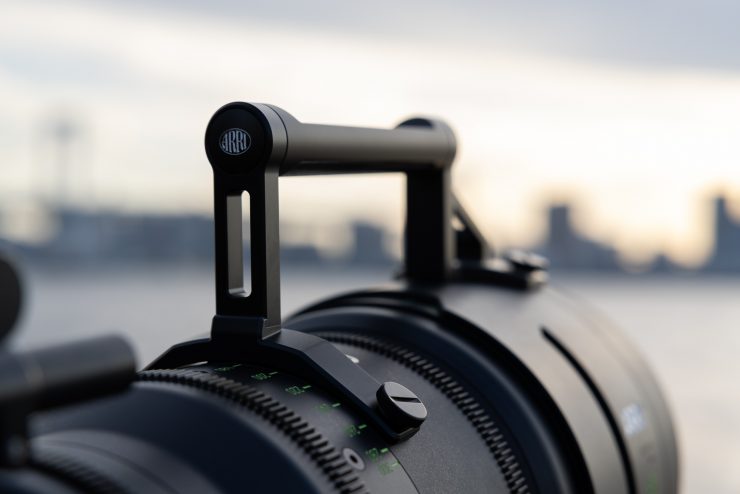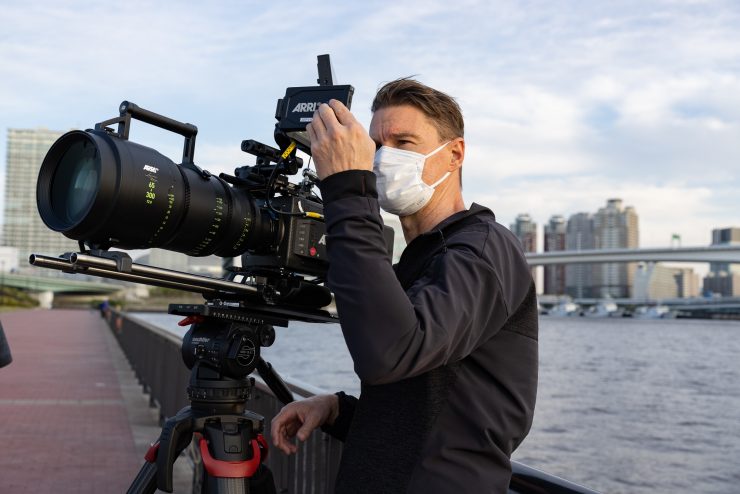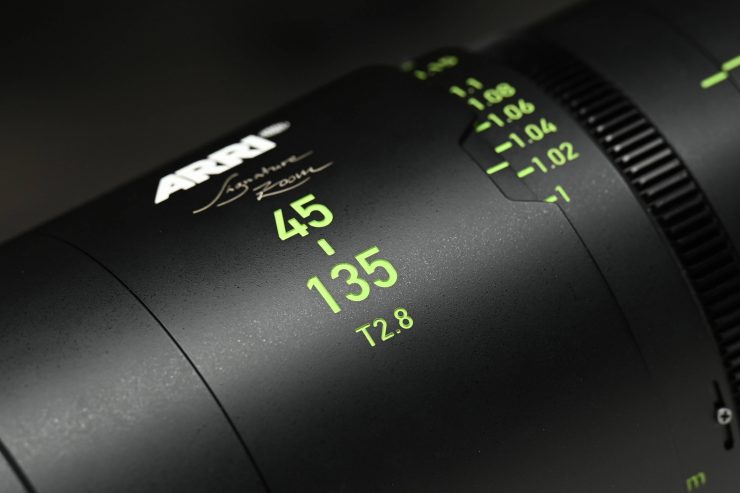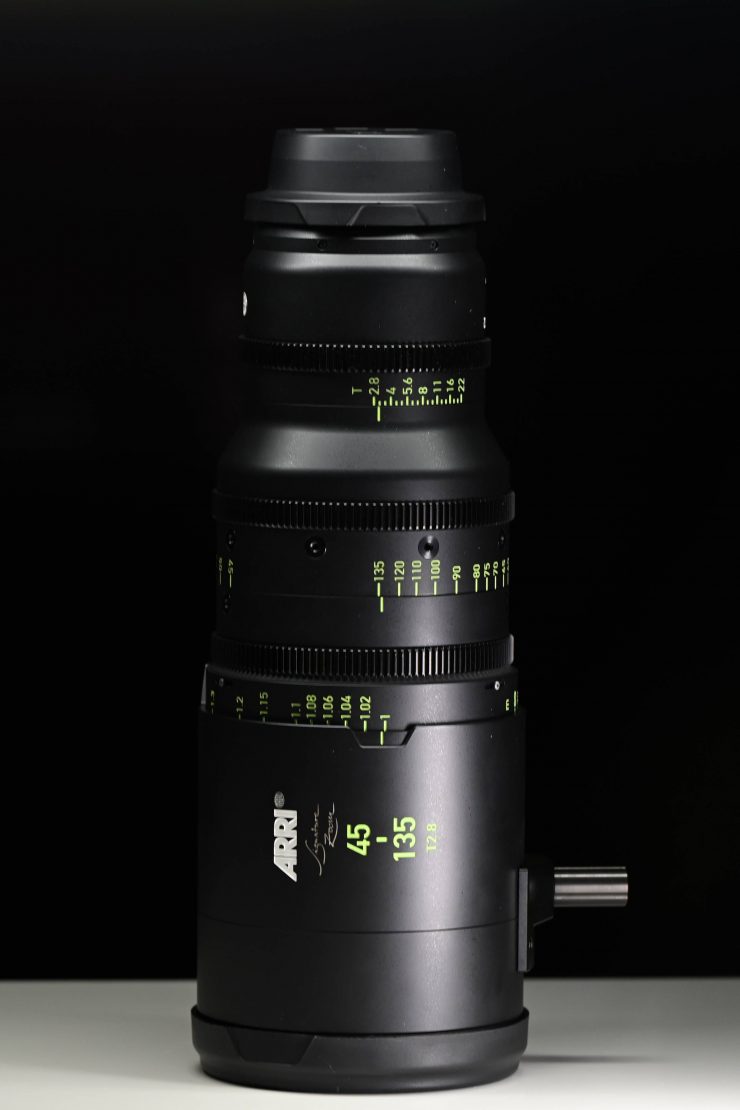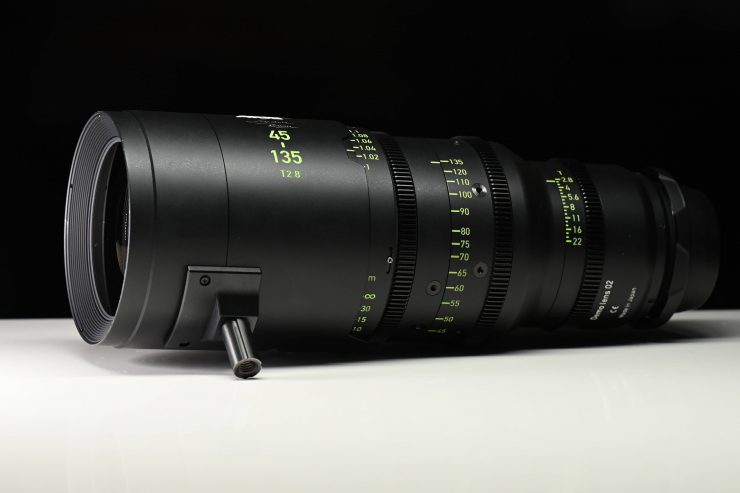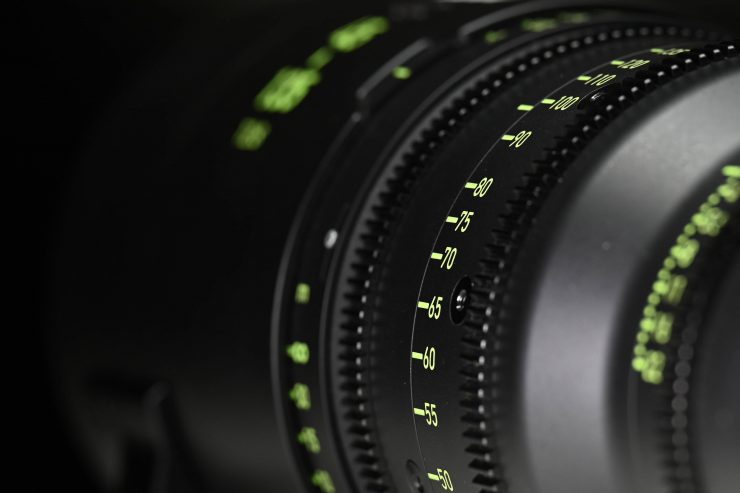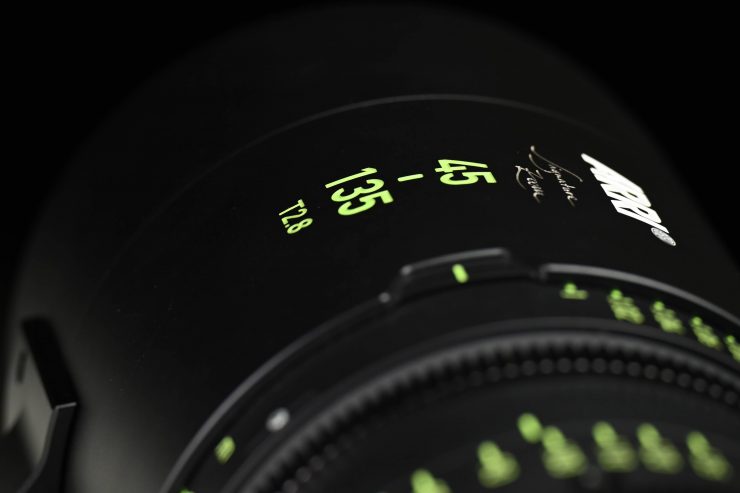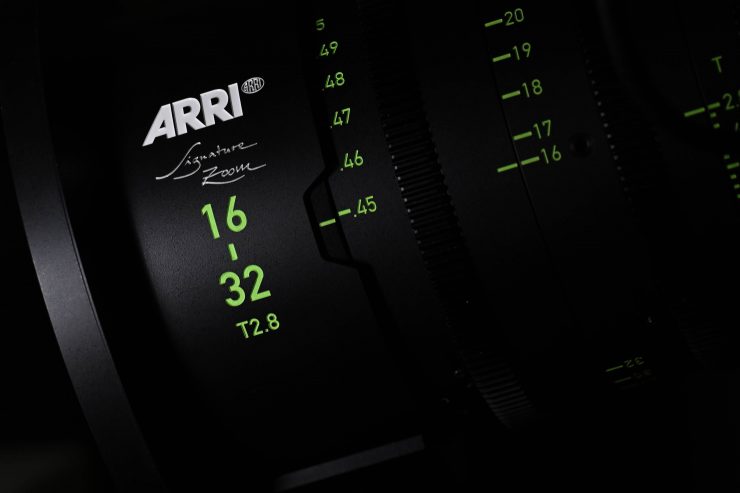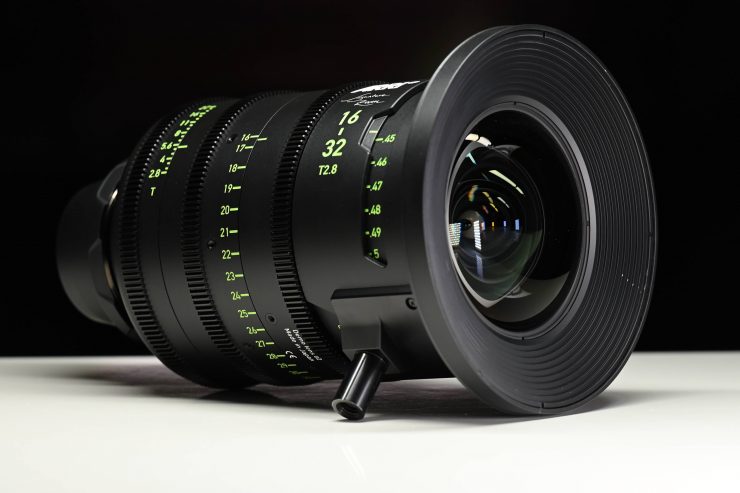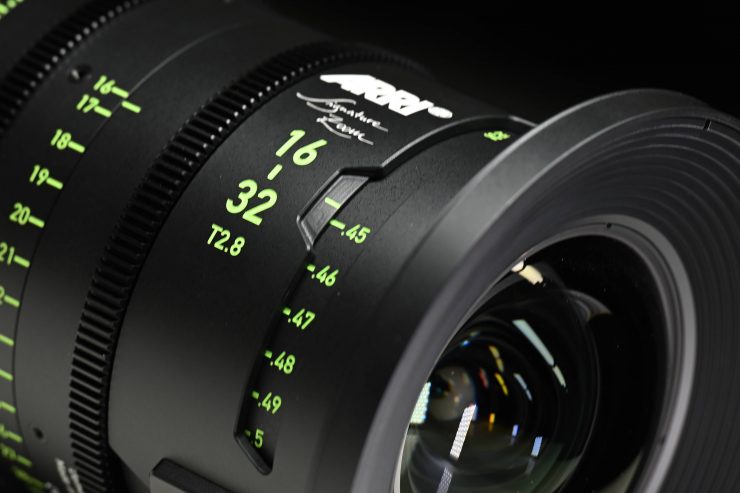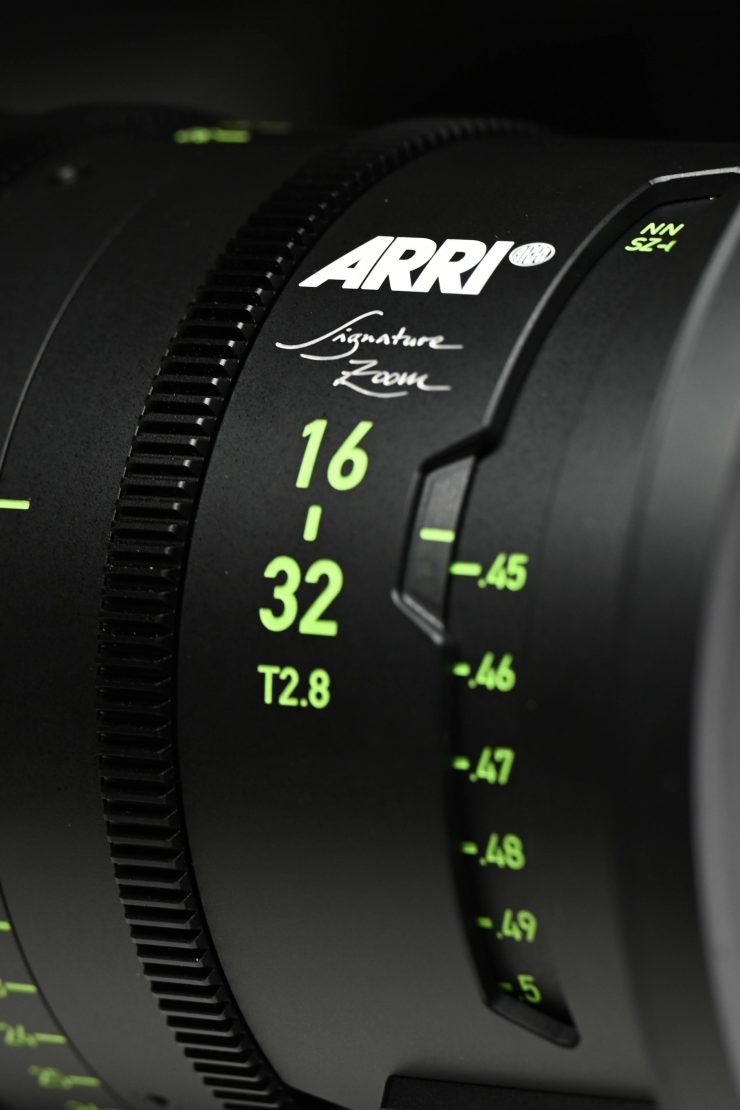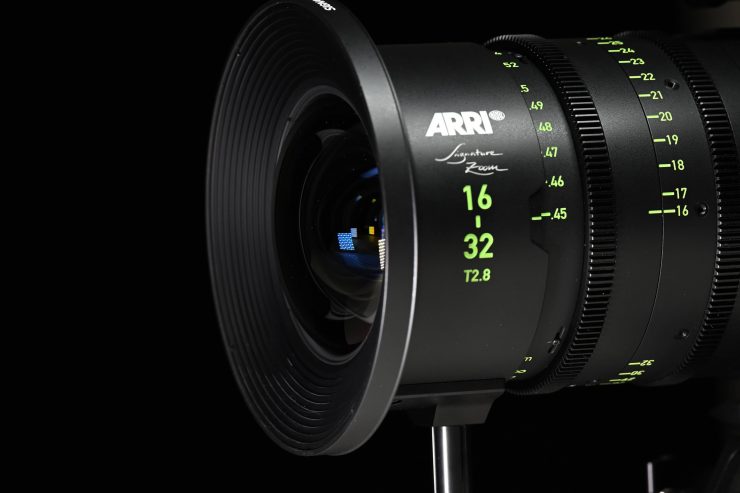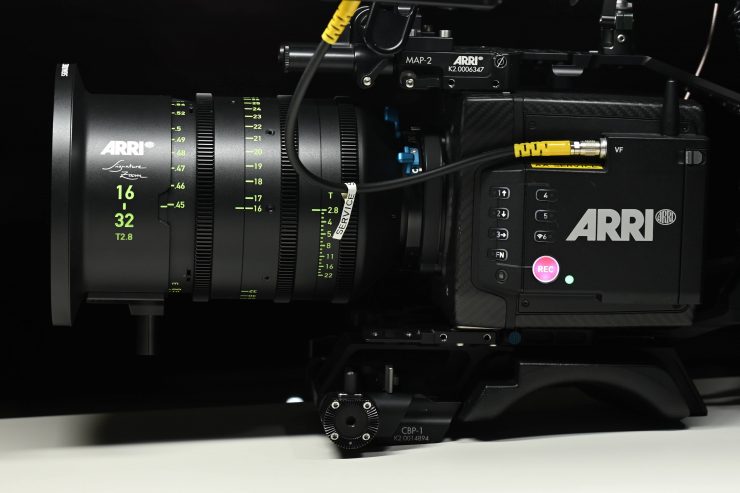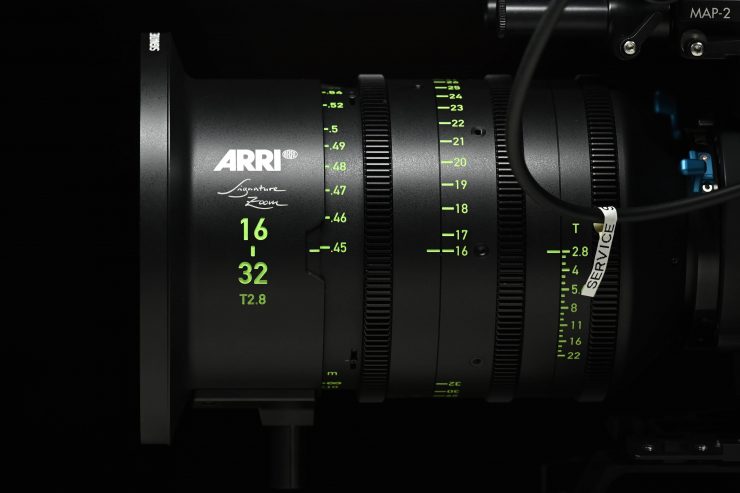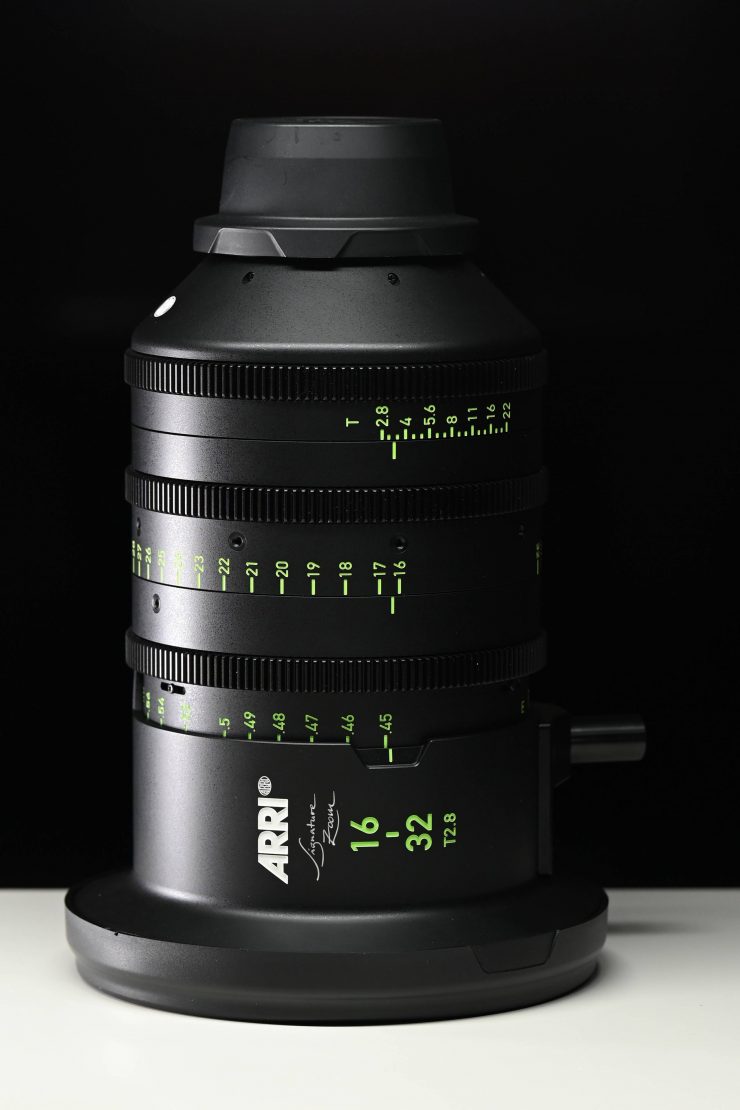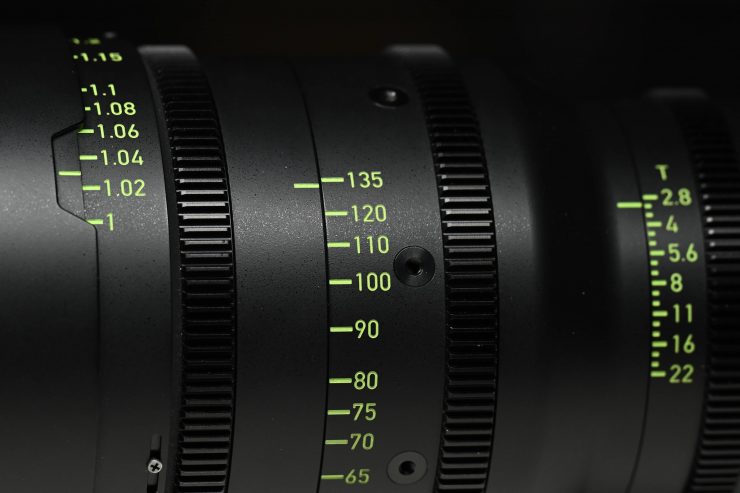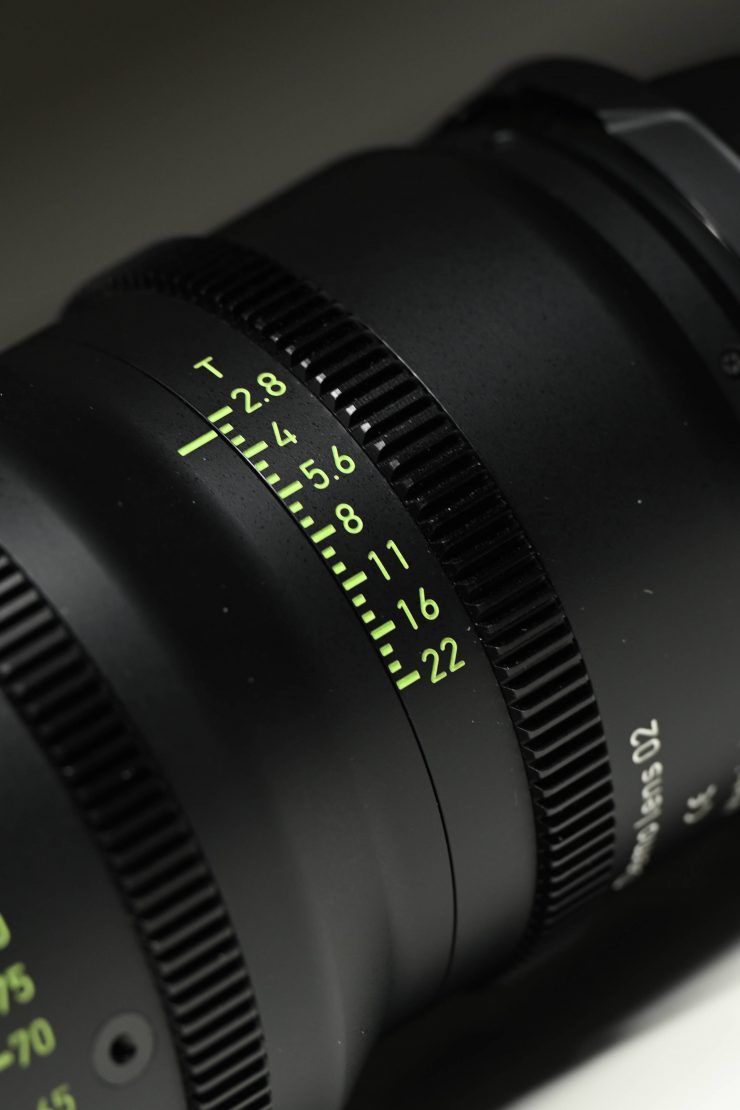ARRI announced its range of Signature Zooms in September last year. I have been able to get early access to prototype versions of these lenses for a couple of days to put them through their paces.
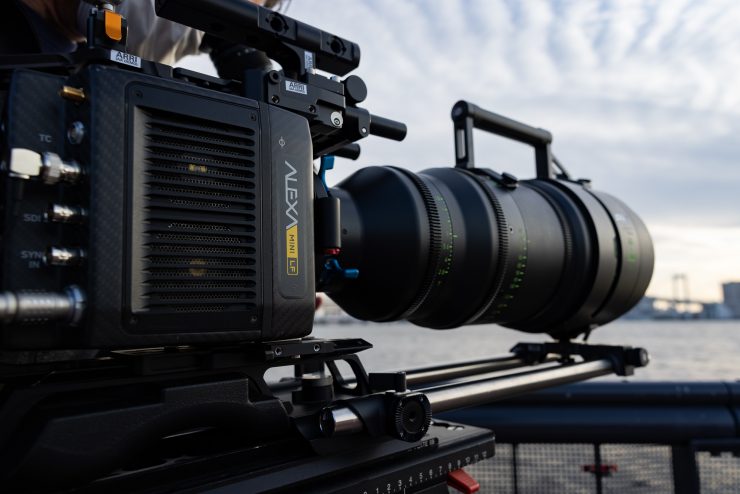
The Signature Zooms have been specifically designed to match the Signature Primes. You can see test footage from these lenses further down in the review.
The ARRI Signature Zooms consists of four lenses and an extender:
- 45-135 mm T2.8
- 65-300 mm T2.8
- 16-32 mm T2.8
- 24-75 mm T2.8
- 1.7x extender
All four lenses feature a T2.8 aperture and they cover a focal length range of 16 mm to 510 mm (with the 1.7x extender), which ARRI claims is the largest in the industry.
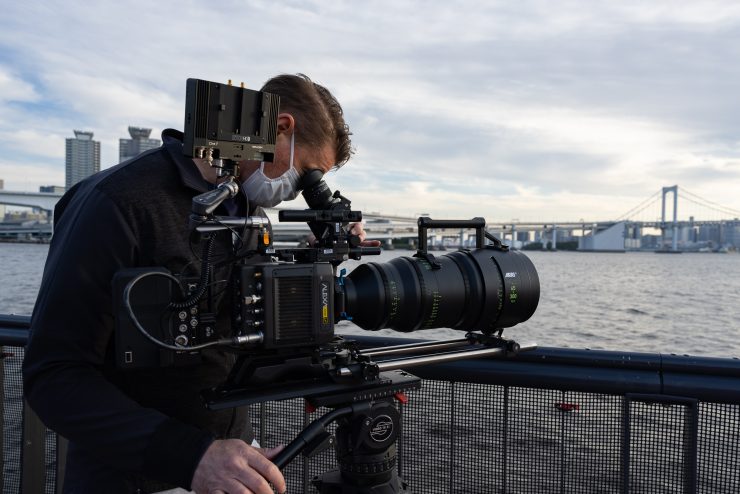
The 1.7x extender turns the 65-300mm T2.8 into a 110-510 mm T4.9. According to ARRI, the extender is exceptionally high quality, and it has been designed specifically for the 65-300mm T2.8 Signature Zoom and the 280mm T2.8 Signature Prime. It only works with those two lenses. There are eight elements in the extender itself and it is said to have minimal effect on the image other than a loss of about 1.5 stops.
I got in touch with the product manager for lenses at ARRI, Thorsten Meywald to ask him some questions about the Signature Zooms.
How long have the zooms been in development?
As we were in the design phase for the Signature Primes it was clear to us we also need matching zooms. And when we introduced the Primes at BSC show in 2018 we answered questions about the zooms with the words: We are working on it but it’s too early for any details. By end of 2018 the concept phase for the zooms switched to the design phase and we developed 4 zooms and one extender in quite a short time. Now we have working prototypes of the longer zooms, the 45-135/T2.8 and the 65-300/T2.8 and of the 1.7x extender as well. Very soon we are also expecting the prototypes of the two shorter zooms, the 24-75/T2.8 and the 16-32/T2.8. So, we can say the entire project time was a little more than two years.
What considerations were taken in choosing the focal ranges?
The Signature Zooms should address different applications and that was the basis for the choice of the zoom range. First, they should complement and match the Signature Primes. When you’re shooting a feature mainly with primes the zooms intercut seamlessly with them, it’s the same look and feel. On the other side we know zooms will become more and more important for shooting entire TV shows or commercials. There are cost savings reasons, but also different shooting styles and because of COVID-19 social distancing and safety on set becomes more important. With a total coverage from 16 to 510mm in large format with the Signature Zooms, you are prepared for each and every situation on set. It was important as well to provide a constant T-stop of T2.8 with no ramping to make cinematic shooting style possible with zooms. The choice of focal length is also very well suited for Super35 applications. 16mm wide angle is a super wide in Large Format and quite a good and popular wide angle in S35.
Are they much lighter than other available full frame and VistaVision zooms because of the magnesium housings?
When you compare high-end zooms they are much lighter. We have introduced magnesium barrels with the Signature Primes, it was not an easy decision for us. On one hand, Magnesium is about 30% lighter compared to aluminum but on the other hand it’s about 5 times the cost. However, as a market leader in high-performance products we think we need to give our industry a state-of-the-art product that is a safe investment for a very long time period. The usage of magnesium was the only way to make lightweight zooms with high optical performance and a modern timeless look at the same time. When you look inside these lenses they are full of glass elements. So we had to find a way to reduce weight with technically advanced mechanics.
Are the Signature Primes and Signature Zooms the first lenses made by ARRI for ARRI?
Yes, however maybe there were other ARRI lenses in the 1950s and 60s, and don’t forget the Arriscope Anamorphics and the ARRI Macro lenses which were made by ARRI. In the digital era, the Signature lens series of primes and zooms and the Ultra-Wide Zooms are ARRI lenses. Following this path gives us much more freedom to realize our philosophy of image look and performance. As you can see with the Signature lenses they are modern and at the same time, they provide emotions that are described as natural and immersive. In lens design, those are contradictory requirements and you have to find a way to balance that out.
Is this now the largest array of matching Cine zooms and primes on the market that covers full frame and VistaVision?
To our knowledge, there is no other system of matching cine primes and zooms in the market with such coverage. All Signature lenses combined have a coverage of 12mm to 510mm and that’s really very large. All lenses are designed by the same optical and mechanical designers within a very short time period to make sure they are matching in look and feel.
Large Coverage
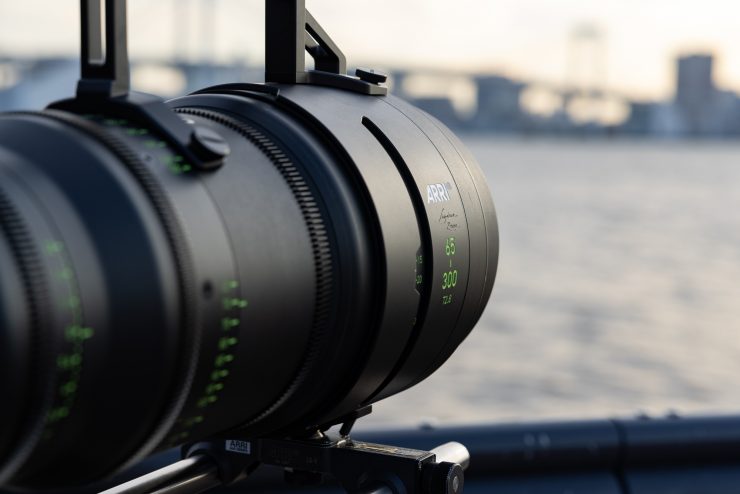
The Signature Zooms, just like the Signature primes, cover full frame and VistaVision sized sensors, however, they work just as well on smaller Super 35 sized sensors.
The new zooms cover up to a 46mm image circle, which is identical to the Signature Primes.
Weight
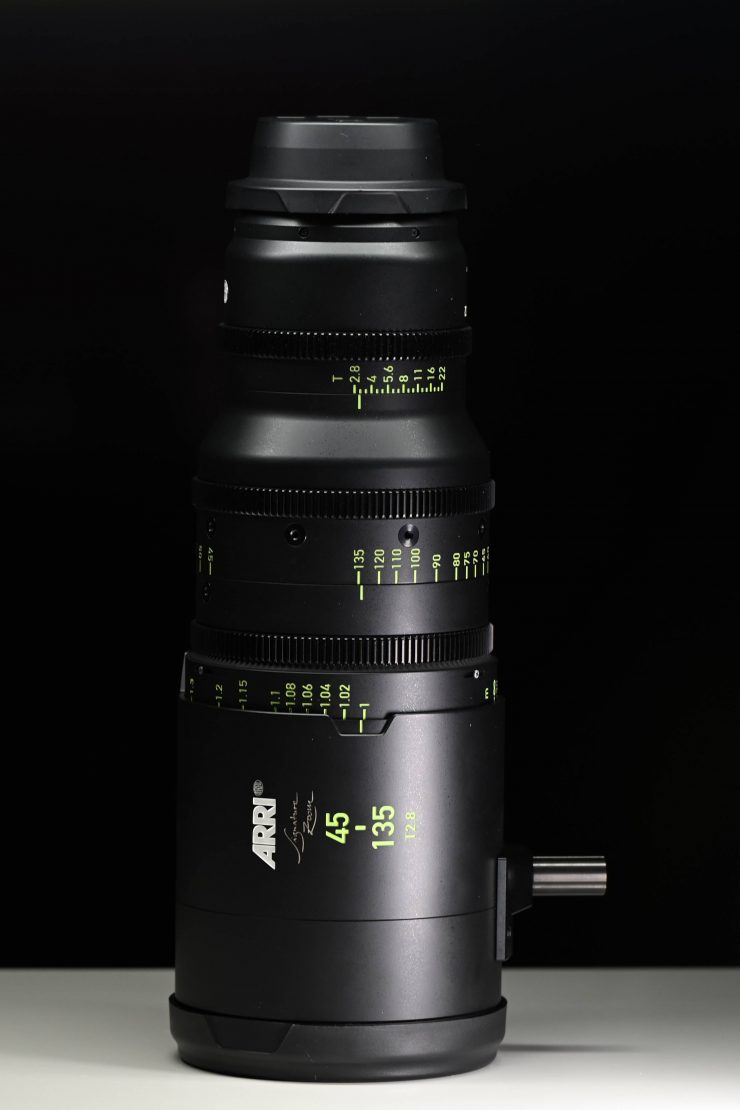
Cine zooms that cover a 46mm image circle and have a decent zoom ratio don’t tend to be small or lightweight.
Here are the weights of all of the Signature Zooms:
16-32 mm T2.8
Weight: 3.8 kg / 8.4 lbs.
24-75 mm T2.8
Weight: 4.1 kg / 9.0 lbs.
45-135 mm T2.8
Weight: 3.7 kg / 8.2 lbs.
65-300 mm T2.8
Weight: 8.1 kg / 19.9 lbs.
On paper they don’t appear to be lightweight, however, ARRI has done a good job of keeping the weight to a minimum considering the Signature Zooms capabilities and constant T-stops.
The 65-300mm T2.8’s 8.1 kg / 19.9 lbs weight might sound like a lot, but you need to remember that this is a lens that covers a 46mm image circle, has a large focal range, and a constant aperture across that range. As a comparison, the only lens that this could be compared to would be the Fujinon Premista 80-250mm T2.9-3.5 Large-Format Zoom Lens (PL) that tips the scales at 3.8 kg / 8.38 lb. What you need to clearly need to remember is this lens isn’t as wide, nor does it have the length of the Signature Zoom. It also doesn’t have a constant T-stop across the zoom range.
65-300mm T2.8
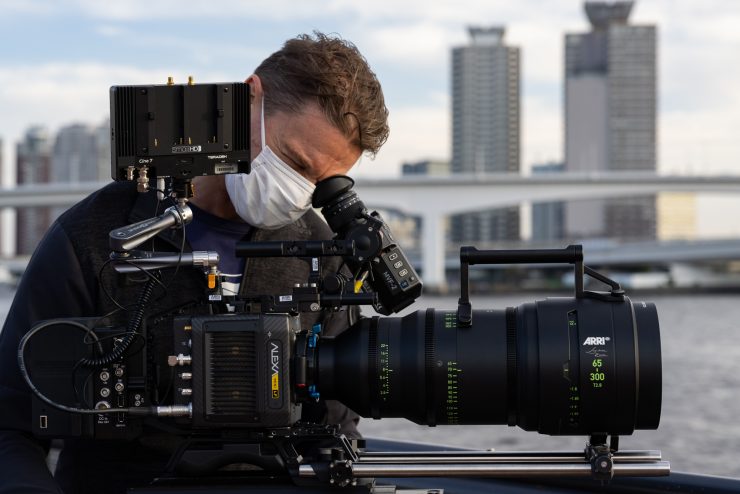
Yes, the 65-300mm T2.8 is a monster of a lens but it is clear that ARRI hasn’t compromised on optical performance. The front diameter of the lens is a whopping 156mm! That is almost as large as the 162mm of the Angenieux Optimo Ultra 12X S35 & U35 Spherical Lens.
ARRI does make a 156mm LMB 4×5 Clamp Adapter specifically for the 65-300mm T2.8 so you can attach a matte box.
What is impressive is that when you are using the 1.7x Extender with the 65-300mm T2.8 the minimum focusing distance of the lens doesn’t change. So even at 510mm, the minimum focusing distance is still 1.3m (51″). That is extraordinary. To put that in perspective, a Canon EF 400mm f/2.8L IS III USM Lens has a close focus ability of 2.5m (98.42″), and even the Canon EF 70-200mm f/2.8L USM Lens can only focus at 1.5m (59″).
45-135mm T2.8
The 45-135mm T2.8 provides a very nice usable focal range on the Mini LF. The 45-135mm focuses down to 25.8″ from the lens front. The lens has an industry-standard 114mm front diameter.
Considering its range, coverage, and constant T stop, the weight of 8.3 lb / 3.76kg and length 11.8″ (29.97cm) is pretty good. As a comparison, the Fujinon Premista 28-100mm T2.9 weighs in at 8.38 lb / 3.8 kg and is 10.04″ / 25.5cm long.
Above you can see a short clip demonstrating the zoom range.
16-32mm T2.8
The 16-32mm T2.8 is a very wide lens when used with the Mini LF. The 16-32mm focuses down to just 7.6″ (19.3cm) from the lens front. It weighs in at 8.4 lb / 3.8kg and has a length of 8.3″ (21cm).
It is interesting that the 16-32mm T2.8 weighs slightly more than the 45-135mm T2.8.
Build Quality
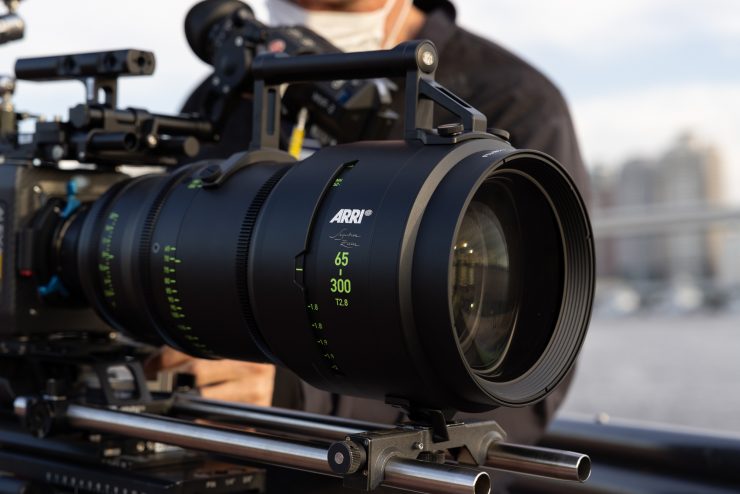
As you would expect, the lenses are beautifully made. Every tiny little detail has been thoroughly thought out. Given the lens’s high price tag this comes as no surprise.
The focus, aperture, and zoom rotations are all very smooth and nicely weighted. The markings are clear and concise and they are also luminous so you can see them when working in the dark.
Other Features
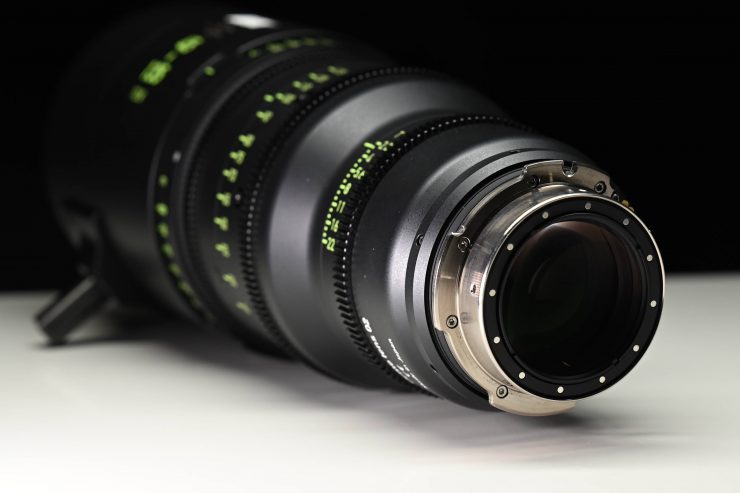
The Signature Zooms can also take advantage of the same detachable magnetic rear filter holder that you can use with the Signature Primes.
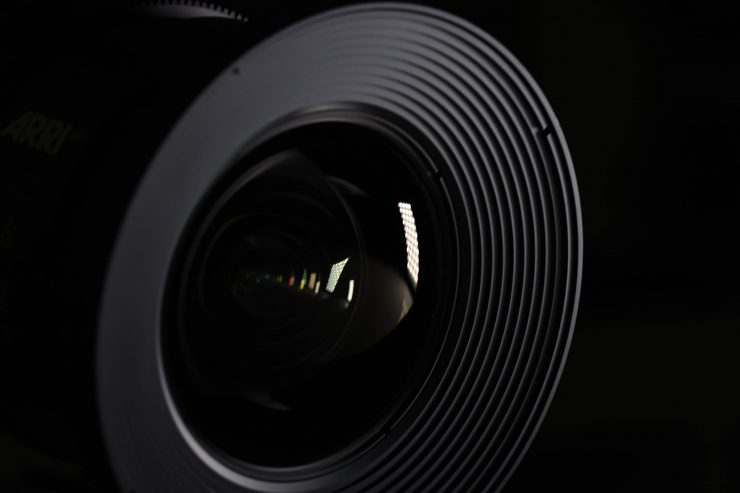
ARRI states that flares are shaped and honed through the best available lens coatings. The lenses also utilize the in-built ARRI LDS-2 Lens Data System. This Lens Data System (LDS) displays lens data and camera-related information on ARRI’s WCU hand unit, as well as via status overlays in-camera, or on connected monitors. In addition, it brings additional benefits in post-production as all the lens data is being carried through the pipeline and embedded in the original camera negative files for use in VFX.
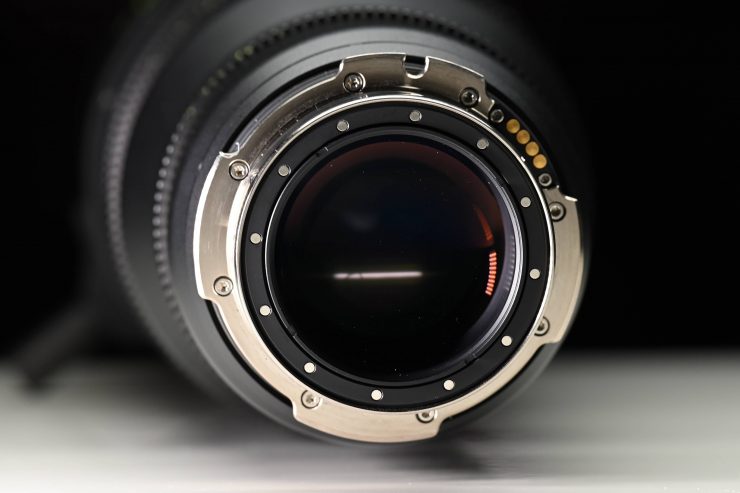
The ARRI Signature Zooms are equipped with an ARRI LPL lens mount. Cameras with a PL mount can be refitted with an LPL mount. A PL-to-LPL adapter offers backward compatibility with all PL mount lenses on the camera side, regardless of whether they are Super 35 or full frame. The adapter attaches securely to the LPL lens mount without tools, so you can quickly switch between PL and LPL lenses on set
The Signature Zooms talk to the LPL mount using LDS-2. LDS-2 is the next evolution of ARRI’s Lens Data System for ARRI’s Electronic Control System and a new generation of lenses. LDS-2 delivers more accurate and faster lens data. Compared to LDS-1 it eliminates the need for initial calibration through absolute encoders which cuts time on set when changing lenses. The new system uses an 8.7x faster interface that enables lens manufacturers to send more data to the camera than before. LDS-2 extends the possibilities of lens data and is being licensed to other lens and camera manufacturers.
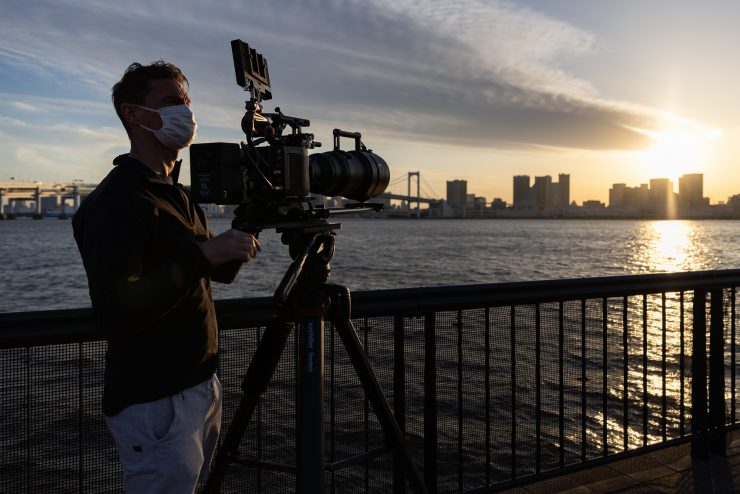
Lenses without LDS can be integrated into the system via the Lens Data Archive (LDA). By mapping a lens, all information about the lens, its scales, name, and serial number can be transferred into a lens archive. When using the lens the next time all that has to be done is to load the lens file for that lens from the Lens Data Archive and calibrate the motors. It takes about 5 minutes to map a lens: after attaching the lens and connecting and calibrating motors (or Lens Data Encoders) on each axis of the lens, the mapping can be done with the Wireless Compact Unit (WCU-4). These lens files can be loaded into the camera.
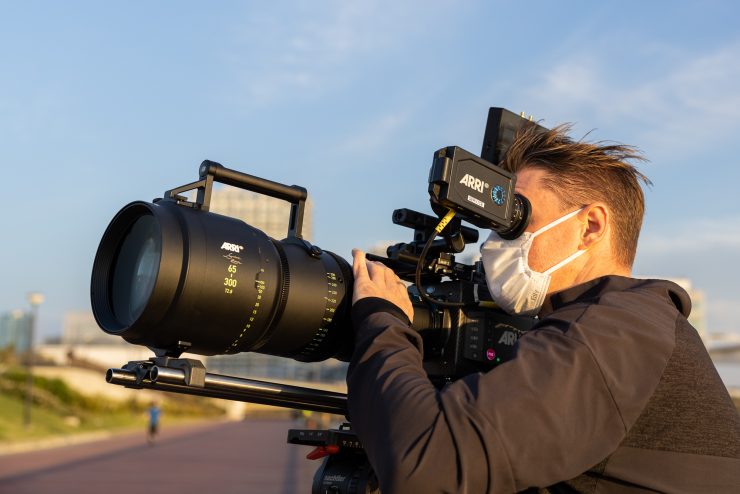
Each Signature Zoom ships with a dedicated zoom lever/stick in a custom aluminum flight case. All of the Signature Zooms also come with a lens support attachment as standard.
Sharpness
I did a few sharpness tests with the 65-300mm T2.8 (with and without the 1.7x Extender) and the 45-135mm T2.8. I shot the same robot I always shoot for sharpness tests. This robot has very finite patterns and detail on it that makes it a challenging test for any lens.
The 65-300mm T2.8 is extremely sharp, but not in a jarring way. I was amazed at its optical performance throughout its entire zoom range. Even when used wide open at T2.8 the results are very impressive.
Even when you use the 1.7x Extender with the 65-300mm T2.8, sharpness doesn’t seem to suffer. I haven’t personally seen or used an extender and a long focal length cine zoom that has anywhere near this level of sharpness. There are absolutely zero signs of any real noticeable chromatic aberration.
Above you can see another sharpness test when using the 65-300mm T2.8 and 1.7x Extender at various focal lengths.
The 45-135mm T2.8 is also very sharp. Above you can see a couple of quick tests that I did at various T stops.
I also compared it at T2.8 directly against the Tokina Vista ONE 135mm T1.5 when it was set at T2.8. This is a good comparison to do against a very, very sharp, and optically good prime lens. You also have to remember that the Vista ONE is being stopped down while the Signature Zoom is wide open. The fact that the 45-135mm T2.8 can hang around in this company and not be lagging very far behind in the sharpness department is very impressive.
It was also interesting to see that the bokeh was rounder and there was less of the ‘onion ring’ effect with the Signature Zoom.
Above you can also see a quick sharpness test with the 16-32mm T2.8 @16mm. This lens is very sharp, especially for a super wide-angle.
Flare
I did a couple of quick flare tests with the 45-135mm T2.8 and the 16-32mm T2.8.
Above you can see the 45-135mm T2.8 when used at 85mm at T2.8.
Above you can see the 16-32mm T2.8 when used at 32mm at T2.8.
Breathing
Some zooms that have long focal reaches can be subject to quite a lot of breathing. The Signature Zooms have basically no real noticeable breathing at all.
No lens technically has zero breathing, but very good cinema glass has such minimal amounts that it is virtually impossible to see. What you do see is some perspective shift which is normal when refocusing a lens.
Image shift is the change in location of a fixed point after a focus rack. It should be in the same spot after you rack focus.
Perspective shift is the focal length of the lens being modified by the movement of the optics. A slight change in focal length may happen if there is a floating element that moves and is not properly corrected for in the design. Certainly, the great majority of lenses have this issue. It’s also tenths of a mm so not overly noticeable.
Focus breathing is a change in image size so the size of object will get larger as it moves out of frame. That is reproduction size.
In summary, perspective shift is the effective focal length change (angle of view change) and focus shift is reproduction size of the object changing as focus moves. Think of it like Macro. A macro lens can be 1:1 life size reproduction but as you focus it can change the reproduction size. That is focus shift from intentional breathing design. The angle of view is not overly affected in that case because it is flat field focus. On spherical lenses the angle of view does change slightly as you focus rack thus making for perspective/angle of view shift.
Matching Primes & Zooms
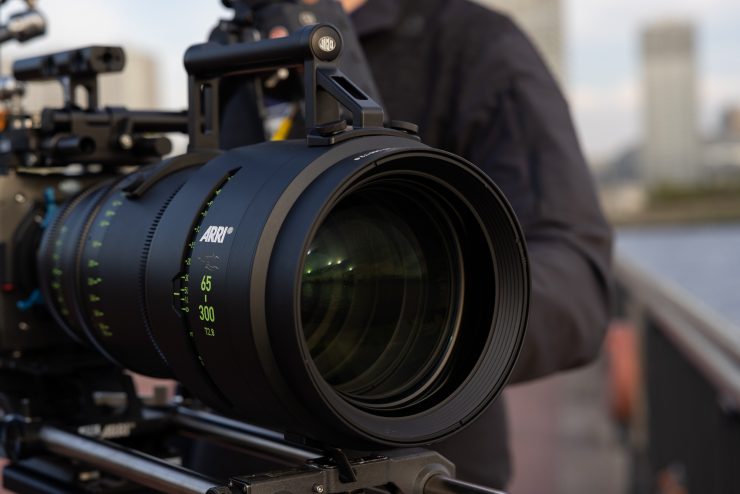
Despite a plethora of full-frame and larger cine primes being available, there are still relatively few cine zoom options. What ARRI has done here is very smart, because now DPs and camera operators will have access to a complete set of matching primes and zooms.
The Signature Primes were announced in March 2018 and they are now available in 16 focal lengths ranging from 12mm-280mm.
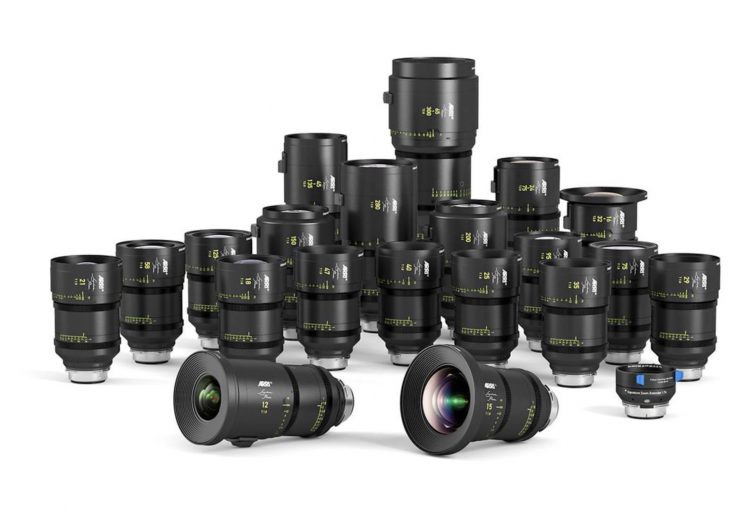
With the addition of the Signature Zooms, there will be 20 different matching lenses to choose from.
Real World Performance
ARRI claims that the Signature Zooms deliver an outstanding optical and mechanical performance that exceeds other cine zooms on the market. They go on to say that they are as close to a prime lens as it is possible to get.
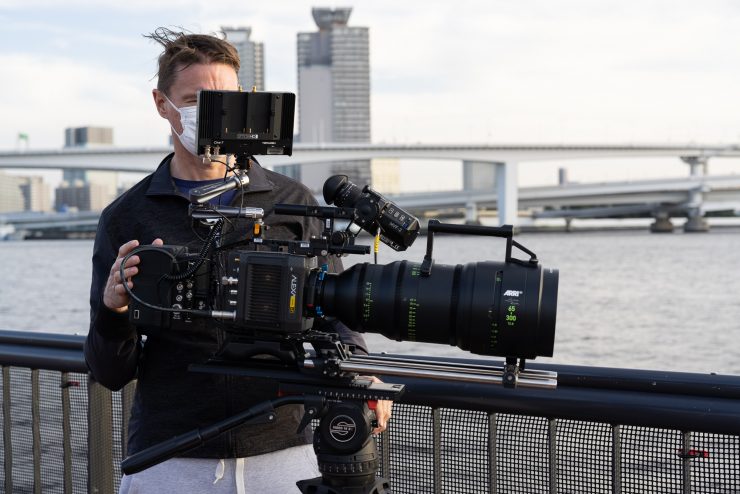
Image copyright Newsshooter 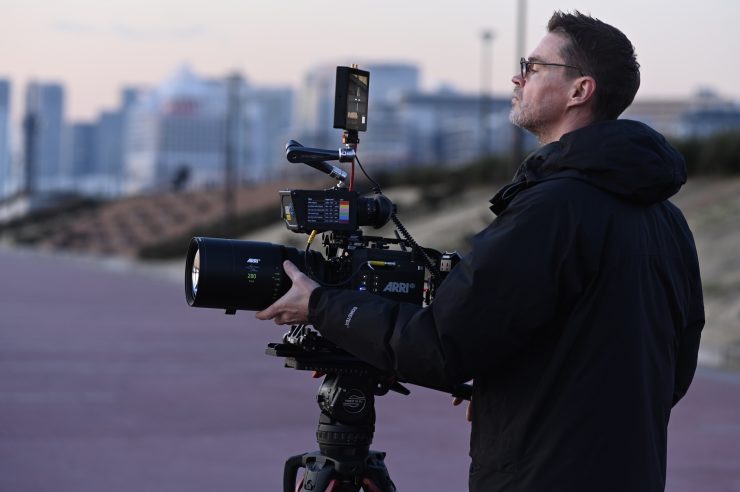
Image copyright Newsshooter
I have shot with the Signature Primes before, so I have a baseline to judge the Signature Zooms against.
Prime lenses are more often than not the go-to option for most DPs, however, depending on the application, zooms allow you to work faster. ARRI claims that because of the quality of the Signature Zooms, you can use them along with the Signature Primes without appreciable compromises.
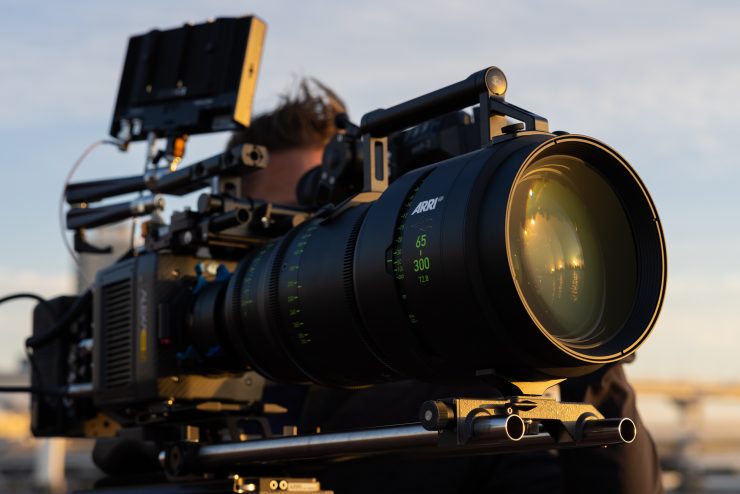
I went out to the exact same spot that I shot with the Signature Primes because I wanted to see the results I could obtain with the zooms.
A lot of the footage you see above was captured wide open and a lot of the shots have been done with the 65-300mm T2.8 and 1.7x Extender. I wanted to push these lenses to see how they held up.
The bokeh that you can get on the 65-300mm T2.8 is simply stunning. The lens also has this beautiful focus fall-off. I was amazed at just how sharp this lens is and just how close it will focus.
The 1.7x Extender gives you massive reach but it doesn’t adversely affect the image quality in any substantial way. A lot of the PL extenders I have used in the past are prone to chromatic aberration, and they can be horribly soft when used with a lens that isn’t stopped down. The ARRI 1.7x Extender doesn’t exhibit any chromatic aberration and even when you combine it with the 65-300mm shooting wide open, the level of sharpness is very impressive.
Both the 16-32mm T2.8 and 45-135mm lenses are also very impressive when it comes to optical performance. I didn’t feel like I was losing any optical performance using the zooms as opposed to the primes. Yes, they aren’t as fast, but you could intercut between the Signature Zooms and Signature Primes and have a hard time telling which was which. This alone makes the Signature Zooms pretty special.
If you are interested, above you can see a quick edge distortion test I did with the 16-32mm T2.8. Even at 16mm, you don’t get much distortion until you start putting objects way out in the far corners of the frame. For a lens that is this wide, the edge distortion is very minimal.
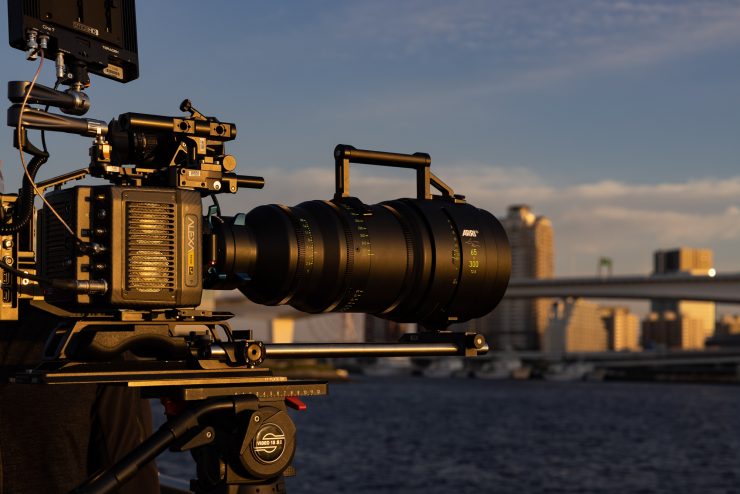
The Signature Zooms and the ALEXA Mini LF make for an extremely impressive combination.
Price & Availability
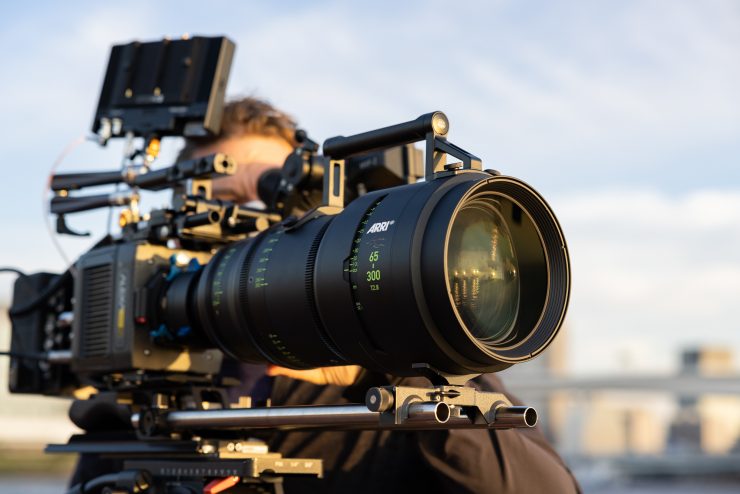
The first two lenses in the series, the 45-135 mm T2.8, and 65-300 mm T2.8 Signature Zooms, as well as the 1.7x extender, will be released in early 2021. The 16-32 mm T2.8 and 24-75 mm T2.8 will be released later in the same year.
Here is the pricing:
- 16-32 T2.8 $70,540.00 USD / 55,900 €
- 24-75 T2.8 $50,350.00 USD / 39,900 €
- 45-135 T2.8 $50,350.00 / 39,900 €
- 65-300 T2.8 $75,590.00 USD / 59,900 € (incl. Extender)
Yes, they are very expensive, but that’s because they are no compromise cinema zooms.
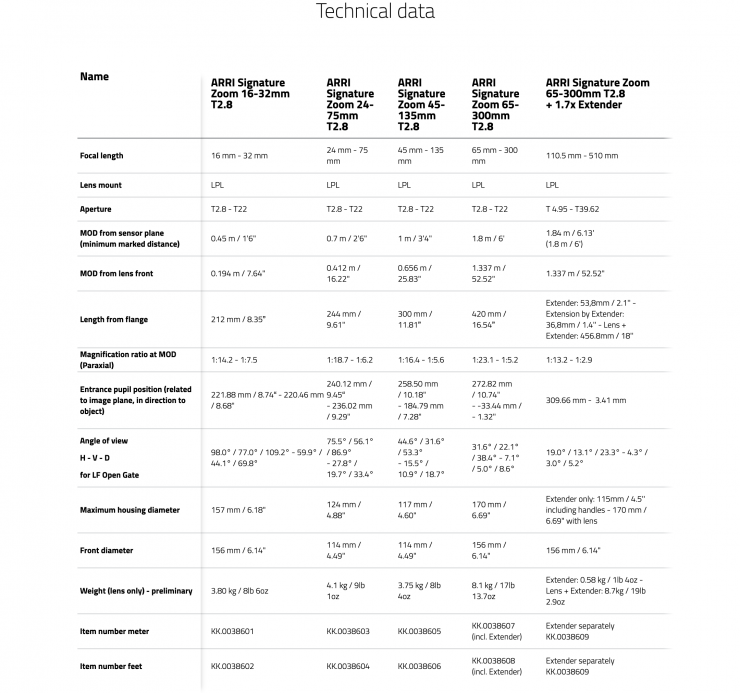
Conclusion
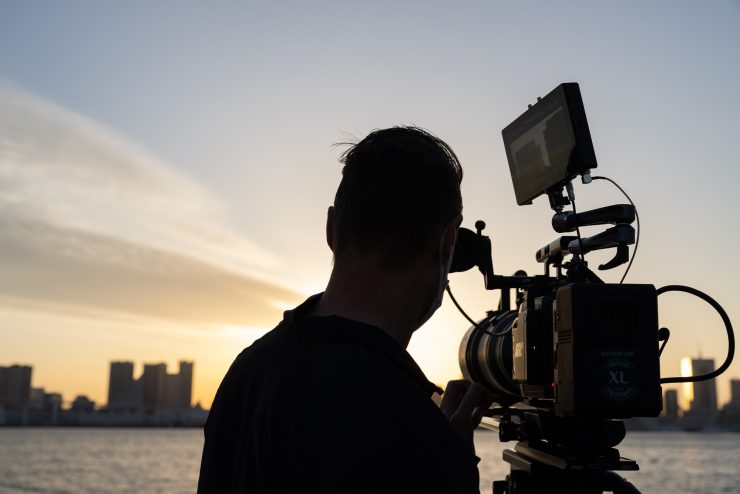
As far as cine zooms go that cover an image circle up to 46mm, the Signature Zooms are the benchmark for which all other zooms should now be judged.
The biggest compliment I can give them is that I felt like I was using primes. I have used quite a large array of cine zooms over the years and the Signature Zooms are the first zooms I have used that don’t feel like zooms. I know that probably sounds like a bizarre statement to make, but I really do feel like these are the first set of zooms I have used that feel like variable primes.
The optical performance is outstanding and the lenses strike a great balance of being sharp without having that ultra jarring appearance. They also have soft beautiful bokeh and delicate flares.
They have a really nice focus fall-off and the bokeh you can achieve is gorgeous. The colors and tonality that you see when using the Signature Zooms with the Mini LF are very lifelike.
Using the Signature Zooms or Primes on an ARRI camera will inevitably give you the best results. Why? Because ARRI has designed the lenses to match and compliment ARRI sensors and ARRI color science. This is very evident when you shoot with the lenses. I was constantly amazed by how good the lenses look on the Mini LF. There is something to be said for using lenses that were designed to be used with a particular camera system.
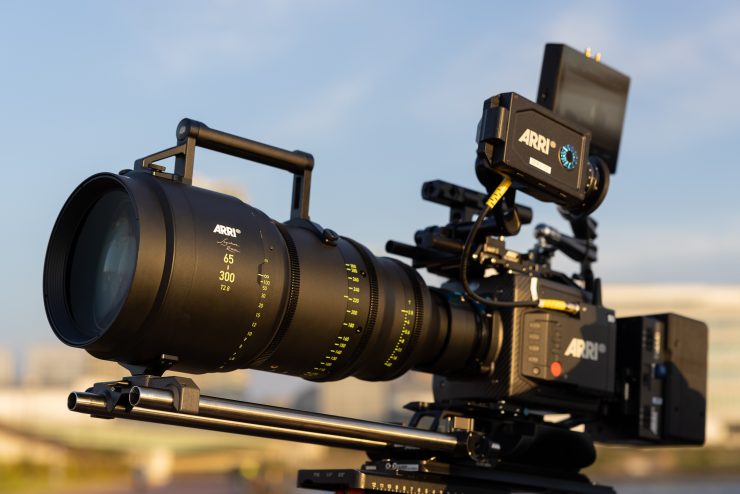
The lenses while clinical in some ways, do have their own personality. It is hard to explain, but they have a ‘look’ that really seems to suit the MINI LF. They are ultra-sharp, but have a delicate way of dealing with flares and focus fall off. It is almost as if ARRI managed to come up with a very good recipe for the Signature Zooms and Primes. All the ingredients that makeup how they look and perform seem to compliment each other.
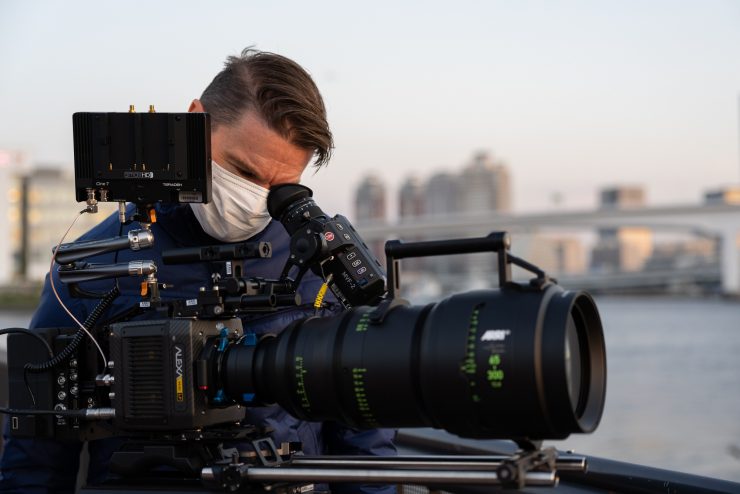
Being primarily a documentary shooter I like longer focal length lenses. The 65-300mm T2.8 Signature Zoom lens is a phenomenal piece of glass.
The Signature Zooms are extraordinarily good lenses, and they are the best Cine zooms I have ever used.
Like what we do and want to support Newsshooter? Consider becoming a Patreon supporter and help us to continue being the best source of news and reviews for professional tools for the independent filmmaker.

